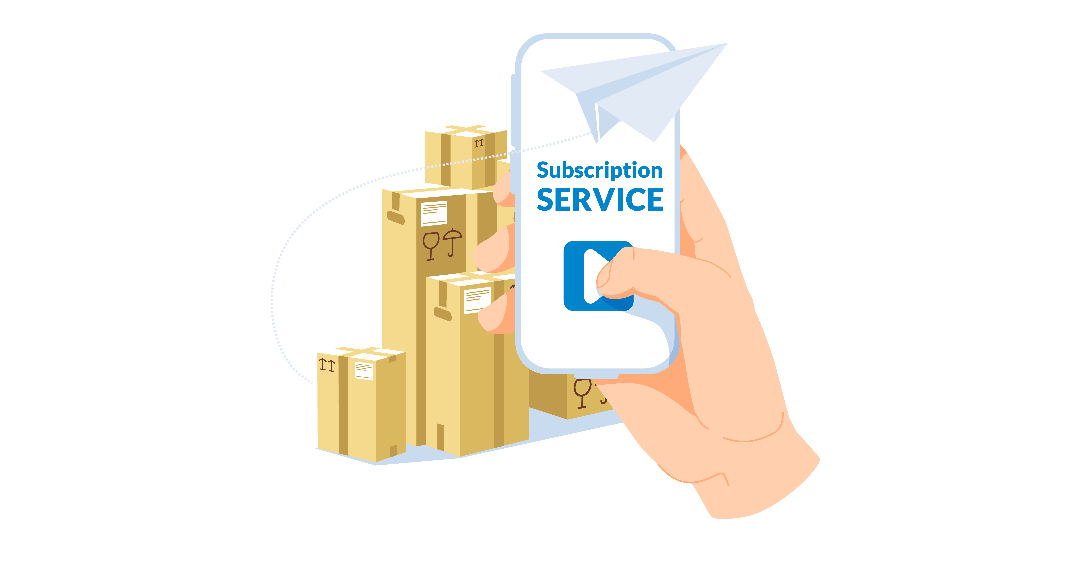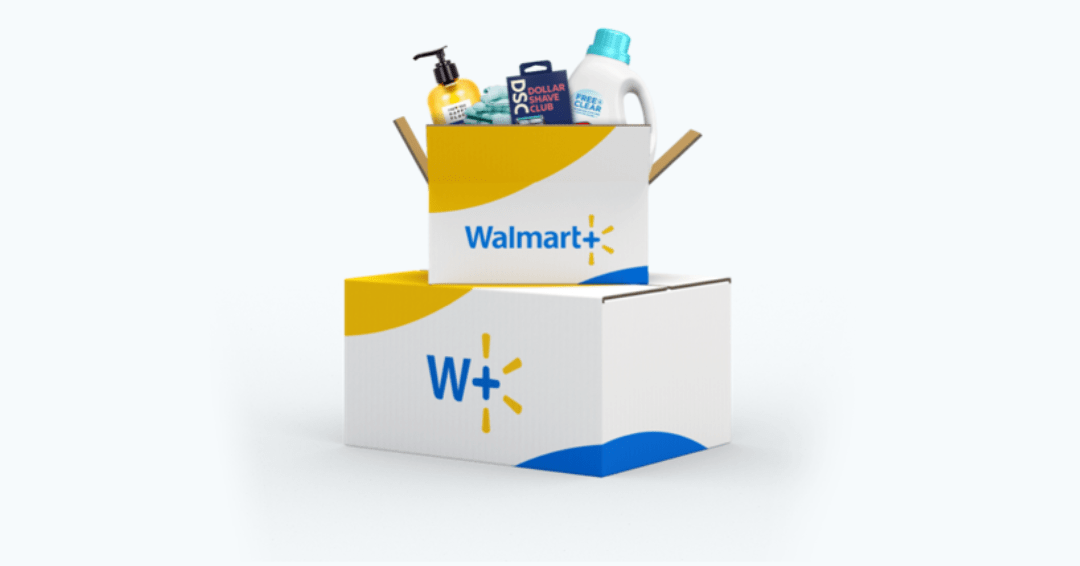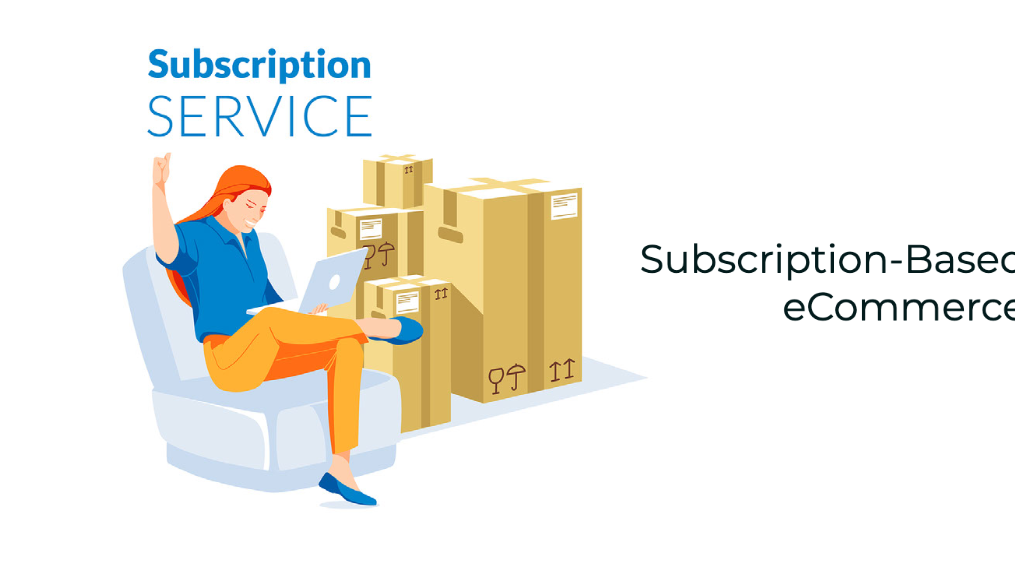Subscription-Based eCommerce
An explosion of subscription-based eCommerce is on the rise, and you can thank the pandemic. When brick-and-mortar stores had no option but to close up shop, shoppers brought to their devices to shop for interests and services.
Businesses fast made hard pivots as buyers preferred convenience and predictability — creating a way for subscription services. As per our research, we predict that the “subscription” economy will double by 2025 — accounting for over $1.5 trillion.
So what does this type of eCommerce entail? Read on to learn more about the following:
- What is subscription-based eCommerce
- Why subscription-based eCommerce is on the rise
- The pros and cons of subscription services
- The types of subscription services for eCommerce
- Subscription-based eCommerce on Amazon and Walmart
What is subscription-based eCommerce?

Put simply, subscription-based eCommerce is a buy-in service for membership or periodic orders.
Subscriptions can assume many forms. Some contain memberships to retailers (like Amazon and Walmart.com), discounts (like Subscribe & Save), or purchasing boxes or specialty products from boutique brands.
Why is subscription-based eCommerce on the rise?
Subscription services enable customers to modulate in a unique, on-demand world. They offer consumers a feeling of comfort and trust, permitting them to simplify everyday shopping tasks and curate their assets and lifestyle. This essential rings true as we scuffle with the day-to-day substances of COVID-19.
The pandemic has contributed to the popularity of subscription-based eCommerce for one overwhelming factor: comfort. Subscription-based eCommerce sales have jumped to an estimated 41% growth.
Millennials prefer this shopping mode most, accounting for the biggest sector in subscription models, kept by Gen Z. It creates sense — Millenials are digital natives and likely have more disposable earnings than their more youthful counterparts.

However, of customer age demographics, subscription-based shopping has resounded with all types of customers and will likely shape eCommerce at big for years to reach — all the more reason for vendors to hold their finger on the beating and bring the advantage of this option.
Pros and cons of subscription services
So what are the advantages and drawbacks of subscription services for sellers? It relies on the type of customer, of course.
PROS
Subscription instances are safer.
One pro is frequent income by loyal customers due to comfort. Then there’s the “buy-in” of a membership. Some customers feel the demand to maximize a membership for what it’s worth. That could mean explaining last-minute assets or purchasing more than if they didn’t have a subscription.
Subscription models create brand awareness.
You understand what they say: if you provide a mouse a cookie, it’s going to ask for a glass of milk. Identically, loyal customers will keep coming back for more if they like and come to depend on a product.

Customers value “pick-me-ups.”
Subscription instances present customers something to look forward to, and creations perform as welcome treats, particularly when multiple sacrifices have to be made for security and our latest normal.
But subscription models are not without their imperfections. The stickiness of subscriptions might not jive with all kinds of customers.
CONS
Customers may not buy if they don’t require a product right now.
Some may fall off if they don’t require a product instantly. However, merchants are rather savvy about serving up what consumers want to purchase. They also know consumers have evolved used to certain products for a seamless life, setting a precedent for convenience.

Subscription models aren’t the most bearable.
Would having a steady collection of a product reverberate with customers? As per our research, we explored the core components of customer loyalty. As sustainable business practices are on the rise and customer minds, consumers may say no to incidentals for the sake of the planet. After all, 21% of buyers noted dedication to sustainability as a top reason for brand loyalty. Shoppers are increasingly aware of this task (as they should be).
Types of subscriptions services
As we mentioned above, subscriptions exist in a mixture of outlets. Let’s glance at some famous ones:
Membership subscriptions

Consumers can sign up to obtain fast and free shipping and complete discounts from merchants. Walmart+ entered the eCommerce stage and gave Amazon Prime some beneficial match with inexpensive groceries, important items, electronics, and more.
Subscription boxes
From makeup to books to crafts, subscription boxes are excellent for niche interests and hobbies. One of the longest-running industries in this space is Ipsy, a beauty box subscription service that sends five product examples to consumers per month. Curated according to subscriber choices, separate shipment is priced according to a preferred subscription tier. According to our most recent buyer survey, subscription boxes will account for 22% of gifts this year.
Subscribe and save

This subscription model is an effortless way for customers to save on frequent acquisitions and household needs. The customer uses generally contain automatic deliveries, free shipping, no additional fees, an option to cancel anytime, and discounts. A famous one? Amazon’s Subscribe & Save authorizes consumers to “set and forget” their buys.
Specialty products
Some companies structure their industry around fixed signature offerings, like gourmet snacks, beverages, or artisanal products. Coffee subscriptions are extremely preferred amongst subscribers, and this category presents an expansive range of specialty products, from single-origin beans to canned vegan lattes. Wandering Bear offers cafe-style cold brew on tap — consumers can subscribe to obtain coffee delivered each month for a discount.
Content subscriptions

Virtual content products are a hallmark of subscriptions and are most likely the most straightforward customer access point to subscription eCommerce. Consider entertainment, education, music, and fitness. Netflix, Prime Video, Spotify, Apple Music, Hulu, HBO Max — nevertheless you kick it, these media giants have thousands of movies, tracks, and shows to entertain. This year, 27% of holiday customers are providing virtual products as gifts.
Subscription services for Amazon and Walmart
Here, we’ll concentrate on the two types of subscription services that conquer Amazon and Walmart: membership services and subscribe and dedicate models.
Membership subscriptions: Amazon Prime and Walmart+
Let’s break down the elemental advantages of both Amazon Prime and Walmart+, the two largest retail subscription platforms right now. According to Jungle Scout’s most recent Amazon vs. Walmart report, 65% of U.S. customers shop on Amazon, and 37% shop on Walmart.com.
Subscription-based eCommerce is here to stay
Subscription-based eCommerce may not serve every consumer, but this model is evolving a mainstay of comfort and an anticipation of modern-day customers. They’re always scrutinizing for “hacks” and as an eCommerce entrepreneur, it’s beneficial to know what kinds of options are at customers’ disposal.
Between the prospective for recurring revenue and faithful buyers from both Amazon and Walmart, merchants should capitalize on the demand.
Do you have any questions about subscription-based ecommerce? Let us know in the comments below!
Born Techies –Digital Commerce agency offers Shopify, Shopware, Magento, and Bigcommerce development with the latest technologies.
Do you want to receive a free consultation about how to optimize your store and generate more sales? Reach us out at [email protected] or contact us, and we will be more than happy to help you out.

